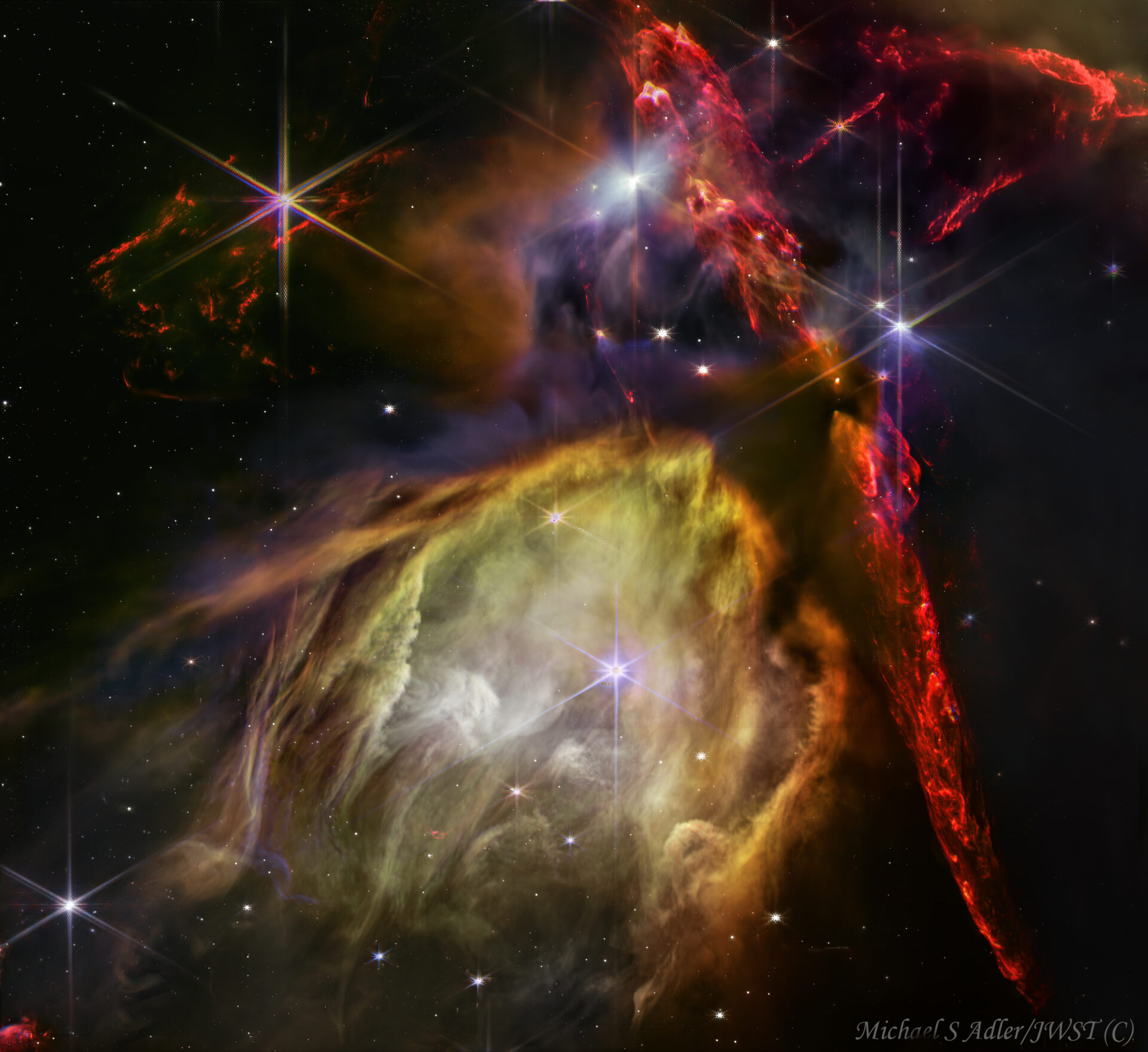Optics: James Webb Space Telescope(JWST)
Mount: JWST
Camera:NIRCAM(JWST Near Infrared Camera)
Filters: 4700n,4440w,3350m,2000w
Dates/Times: March, April, 2023
Location: Lagrange Point 2 orbit, ~1 million miles from Earth
Exposure Details: Four near infrared filters on the JWST NIRCAM ranging from 2000nm to 4700nm with 800s exposures. There were 4 to 5 images done for each filter to capture the wide field of view.
Acquisition: Downloaded from the MAST website(Mikulski Archive For Space Telescopes)
Processing: Maximdl was used to stretch and align the data from the four filters. Photoshop was used to make a mosaic of 4 to 5 images for each of the four filters and create an initial three wavelength color image created from the 470n(red),335m(green),and 200w(blue) filters. Photoshop was then used to combine this data with 444w filter in yellow. Processing done in PS 2022 and Camera Raw. Topax DeNoise AI was used to reduce background artifacts and this did a better jon than NoiseX Terminator.
Rho Ophiuchi Nebula, JWST
Original price was: $65.00.$52.50Current price is: $52.50.
Rho Ophiuchi Nebula, JWST
Sun-like stars and future planetary systems are forming in the Rho Ophiuchi molecular cloud complex and at a distance of 390 light years it is the closest star-forming region to our planet. The James Webb Space Telescope’s NIRCam peered into the nearby natal chaos to capture this infrared image at an inspiring scale. The spectacular cosmic snapshot was released to celebrate the successful first year of the JWST exploration of the Universe. The wide 6.4 arc minute field of view is less than a light-year across. Rho Ophiuchi region and contains about 50 young stars many of which are the size of the Sun. Brighter stars clearly sport Webb’s characteristic pattern of diffraction spikes. Huge jets of shocked molecular hydrogen from newborn stars are red in the image, with the large, yellowish dusty cavity carved out by the energetic young star near its center. The lighter-colored gas surrounding this star consists of polycyclic aromatic hydrocarbons , a family of carbon-based molecules that are among the most common compounds found in space. Near some stars in the image are shadows cast by their proto-planetary discs. This can be seen as a small arc to the left of the star just to the left of the bright star in the top center of the image.
This was a very difficult image to create. First it was necessary to download almost 100GB of data from the Mikulski Archive for Space Telescopes(MAST). There were images from 4 separate infrared filters used ranging from 4.7u to 2.0u that were combined to make the final image. Each of these was a mosaic of 4 to 5 separate JWST images due to the large field of view. Before the mosaics could be made each of the images had to be non linearly stretched to increase the tonal range so the detail could be seen. The final image was a combination of the four mosaics from each filter with the 4.7u filter mosaic image in red, the 4.44u filter image in yellow, the 3.35u image in green, and the 2.0u image in blue.


